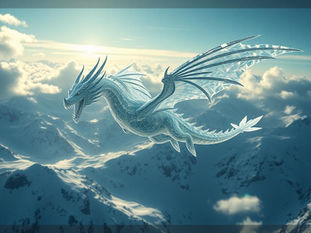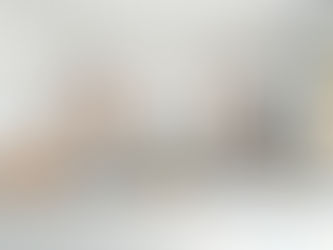
How to Get a Consistent Style for Your Midjourney Images
May 5
4 min read
0
6
0

Using Midjourney can be a great way to find ideas for design projects. Midjourney version 6 makes it easier to get visuals you like. However, getting images that have a consistent look can be tricky. Sometimes your results might look random and not match your creative style.
This guide shows you how to create a more consistent image style in Midjourney. These tips can help you develop your own unique look for your projects.
Technique 1: Careful Prompting
The first step is often in how you write your prompt. An additive prompting method starts with the most important details first.
Start with the viewpoint (e.g., wide angle lens for a room).
Describe the space (e.g., living room, bathroom).
Add specific lighting details (e.g., time of day).
Include details like furniture, materials, color palettes, and atmosphere.
Finish with parameters like aspect ratio (size of the image, like 16:9 or 9:16).
Using the same prompt structure and details for related images helps keep them consistent. For example, keep lighting the same when changing rooms in a series.
Saving your prompts is also helpful. You can store them to easily find and adapt similar prompts for different projects. Managing your prompts and keeping track of what works can significantly improve consistency. A tool designed for Midjourney automation, like the TitanXT Midjourney Automation Suite, can make saving, organizing, and reusing prompts much easier, helping you maintain that desired style across many images.
Try Image Prompts
You can start a prompt with an image. Upload an image you like, then add the image URL at the beginning of your prompt before your text description.
Midjourney will include elements from the image in the new result. Be aware that it can sometimes take things from the image very literally, leading to unexpected results.
Technique 2: Using Different Commands
Beyond the usual /imagine command, others help with style and consistency.
The Describe Command
Use the /describe command and upload an image. Midjourney will give you four possible prompts based on that image.
This is great for seeing how Midjourney interprets images. You can use the suggested prompts to learn and improve how you write your own descriptions. It helps you understand what details Midjourney finds important in an image.
The Blend Command
The /blend command lets you upload two images. Midjourney will create images that combine the two.
This can produce unique results. For instance, blending a photo with a hand-drawn sketch can give your final image a distinct artistic feel. It's a fun way to add creative flair.
Technique 3: Using Parameters
Parameters are instructions you add at the end of your prompt. They help control how Midjourney creates the image.
Style Reference Parameter
The `--sref` parameter is key for style. Instead of including an image's content like an image prompt, `--sref` uses the *style* of a reference image to influence your new creations. You add `--sref` followed by the URL of the style image at the end of your prompt.
This is useful for getting the overall look or feel of an image without including specific objects from the reference.
The Stylized Parameter
Midjourney tries to make images look good by default. The `--stylize` or `--s` parameter lets you control how much artistic freedom Midjourney takes.
Use values from 0 to 1000 (default is 100). Lower values (closer to 0) stick closely to your prompt. Higher values (closer to 1000) give Midjourney more room to add its own artistic ideas, potentially moving away from your prompt.
The Seed Parameter
Every image generation has a hidden 'seed' number. If you use the same prompt and the same seed number, you can get a very similar result again.
To get a seed number, react to a generated image in Discord with the envelope emoji. Midjourney Bot will message you the seed number. Add `--seed` followed by the number to your prompt to reuse it.
Style Weight Parameter
When using the style reference parameter (`--sref`), you can control how much Midjourney considers the style reference using the `--sw` parameter (Style Weight). Values range from 0 to 1000 (default is 100).
A low `--sw` value means Midjourney will barely use the style reference. A high `--sw` value means it will strongly follow the style reference image.
Relative Prompt Weights
You can give different parts of your prompt or different style references more or less importance using double colons `::` and numbers. Adding `::2` after a part of the prompt makes it more important than a part with `::5`. While Midjourney V6 documentation says it uses these less, you can still see good results from experimenting.
[P]Understanding and managing these parameters can feel overwhelming. Keeping track of which parameters work best for certain styles or prompts can be complex. Fortunately, tools like the TitanXT Midjourney Automation Suite are built to help manage these details, store your winning combinations, and streamline the process of achieving consistent, high-quality results.[/H3]
The Chaos Parameter
The `--chaos` or `--c` parameter (values 0-100, default 0) affects how varied the four initial images in a grid are. A low value means the results will be quite similar to each other and your prompt. A high value means the four images will be very different and possibly unexpected.
This is useful for experimentation, especially when you are first exploring ideas and want a lot of diverse options quickly.
Putting It Together
Getting consistent images in Midjourney takes practice and experimentation. There are many ways to combine prompts, parameters, and commands.
By understanding these techniques, you can gain more control over your image results. Remember to save prompts and images that work well for you. This helps you build your own library of styles and looks. For serious users, automating your workflow can save significant time and improve consistency. The TitanXT Midjourney Automation Suite offers features that assist with saving prompts, managing parameters, and organizing your image generations.
Keep experimenting to find what helps you create the perfect images for your projects.






